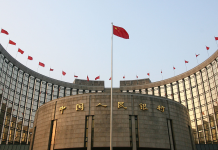BEIJING: Restoration work on the Qingcheng Palace complex, a royal sacrificial venue along the historic central axis of Beijing, has been completed, according to local authorities.
After spending the past 15 months demolishing houses and renovating royal buildings, the historical structure of the complex has been restored. The palace is expected to open to the public in the future.
Built in the Ming Dynasty (1368-1644), the palace is located inside the Altar of the God of Agriculture, also referred to as the Xiannongtan Temple. The palace was formerly known as Zhaigong, which literally translates to the fasting palace. It was a place where the emperors abstained from heavy meals and meditated before worship.
It was renamed as Qingcheng Palace in the Qing Dynasty (1644-1911), becoming a place where the emperors held celebratory rituals after cultivation ceremonies while praying for a good harvest.
Restoration work of the ancient buildings started in June last year, following the principle of “minimal intervention.” This approach focused on targeted repairs for damaged cultural relics, such as tiles and walls. Traditional materials were used to pave the ground in the courtyard.
Workers also renovated the drainage system and equipped the houses with air conditioners and necessary lighting facilities. Additionally, security monitoring systems, firefighting water systems and lightning protection facilities were also installed.
Pan Wei, deputy director of the Beijing Ancient Architecture Museum, expressed hope that the Qingcheng Palace will become a place for visitors to experience traditional culture and for experts to have academic exchanges on world cultural heritage. He believes that such activities could “further enhance public awareness of the protection of historical and cultural heritage.” –Agencies






